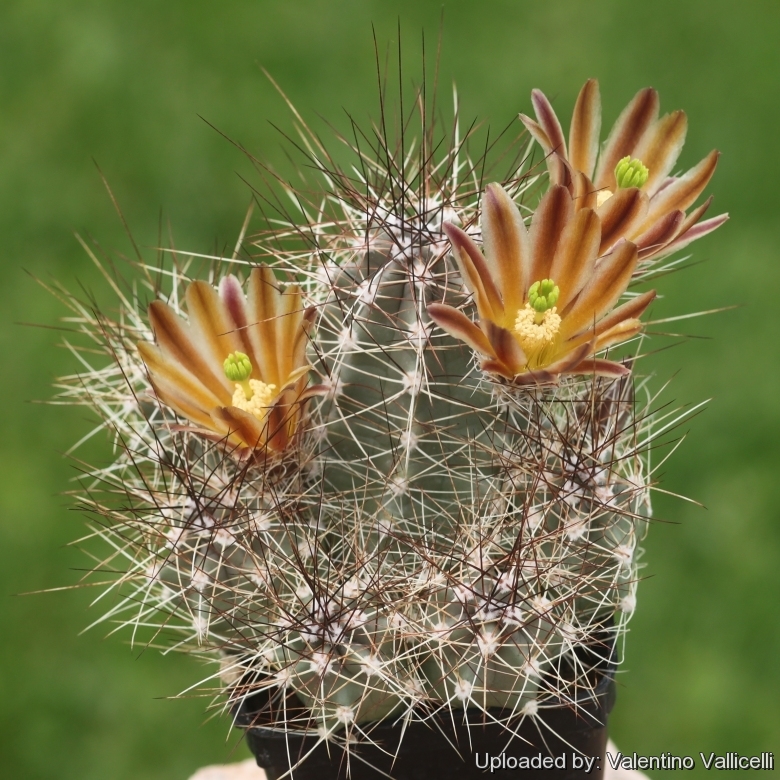
Echinocereus mapimiensis Photo by: Valentino Vallicelli
Origin and Habitat: Mexico (Coahuila: Bolsón de Mapimí)
Type Locality: Coahuila 366 m Mexico, Coahuila, Maricopa County, Bolson de Mapimi, 28,5 km Nort of Acatita. N 33 deg 27' 33'', W 111 deg 56' 35'' Elevation: 366 meters
Habitat: Grows among scrubs. The area of the Bolsón de Mapimí harbour a rich succulent flora comprising: Grusonia bradtianaSN|7500]]SN|7500]], Coryphantha poselgerii v. valida, Echinocactus horizonthaloniusSN|1711]]SN|1711]], Thelocactus bicolorSN|3420]]SN|3420]], Epithelantha micromerisSN|6936]]SN|6936]], Dasylirion longissinum, Mammillaria pottsiiSN|9355]]SN|9355]], Escobaria duncaniiSN|10200]]SN|10200]], Ibervillea sonorensis and Coryphantha runyonii.
Synonyms:
Description: Echinocereus mapimiensisSN|21824]]SN|21824]] is a small offsetting cactus with white and caramel spines and small rusty flowers. It slowly forms open clumps up to 25 cm in diameter.
Stem: Cylindrical 6-30 cm tall, 1,5 to 3,5 cm across, erect or somewhat drooping with age, light green/grey/blue soft, not obscured by spines.
Ribs: Mostly 6, rounded, forming low tubercles.
Areoles: Round, white felted.
Spines: Thin, straight, aciculate, blackish to deep red, turning greyish-white as the olden.
Radial spines: 4 to 8 spreading, 9-18 mm long.
Central spines: 2 to 4 similar to the radials, 15-22 mm long.
Flower: Funnel-shaped (30-)42-44(-45) mm long, (17-)25-29(-40) mm in diameter, outer perianth segments dark brownish-magenta/maroon/yellow with lighter cream colored margins, inner perianth segments rusty-red to brownish-magenta with lighter margins; stigma lobe number up to 9, stigma colour green.
Fruits: Spherical ovoid, green, 15-21 mm long, 12-15 mm broad spiny.
Bibliography: Major references and further lectures
1) Edward Anderson “The Cactus family” Timber Press, Incorporated, 2001
2) James Cullen, Sabina G. Knees, H. Suzanne Cubey "The European Garden Flora Flowering Plants: A Manual for the Identification of Plants Cultivated in Europe, Both Out-of-Doors and Under Glass" Cambridge University Press, 11/Aug/2011
3) David R Hunt; Nigel P Taylor; Graham Charles; International Cactaceae Systematics Group. "The New Cactus Lexicon" dh books, 2006Jackie M. Poole, William R. Carr, Dana M. Price, Jason R. Singhurst “Rare plants of Texas: a field guide” Texas A&M University Press, 30/Dec/2007
4) Cact. Succ. J. (Los Angeles) 70: 285, fig. 1998
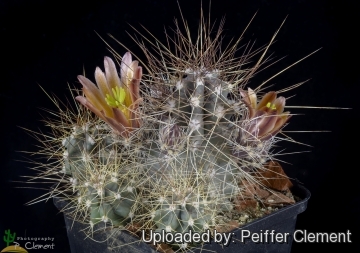 Echinocereus mapimiensis Photo by: Peiffer Clement
Echinocereus mapimiensis Photo by: Peiffer Clement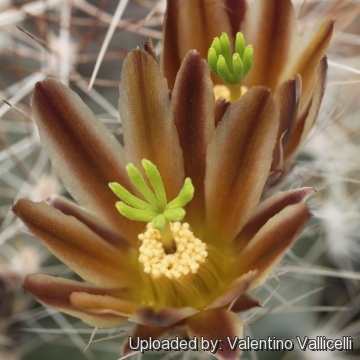 Echinocereus mapimiensis Photo by: Valentino Vallicelli
Echinocereus mapimiensis Photo by: Valentino Vallicelli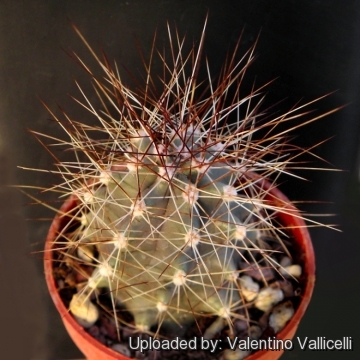 Echinocereus mapimiensis Photo by: Valentino Vallicelli
Echinocereus mapimiensis Photo by: Valentino Vallicelli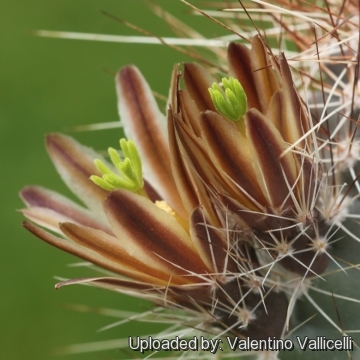 Echinocereus mapimiensis Photo by: Valentino Vallicelli
Echinocereus mapimiensis Photo by: Valentino Vallicelli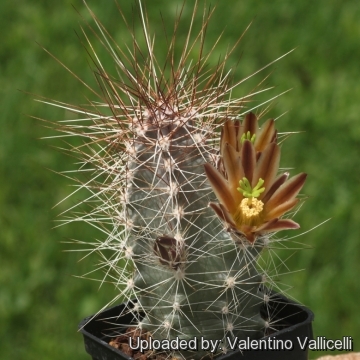 Echinocereus mapimiensis Photo by: Valentino Vallicelli
Echinocereus mapimiensis Photo by: Valentino Vallicelli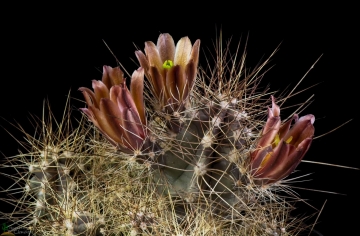 Echinocereus mapimiensis Photo by: Peiffer Clement
Echinocereus mapimiensis Photo by: Peiffer ClementCultivation and Propagation: In culture Echinocereus mapimiensisSN|21824]]SN|21824]] is without problems, easy to grow, very attractive and regularly shows its beautiful flowers, if provided with an adequate winter rest period.
Moisture: It is sensitive to over-watering (rot prone), and needs good drainage. In the winter keep it cool, and absolutely dry conditions.In summer keep it well watered when it's hot.
Exposure: Needs full sun. To achieve the best spine density give these plants lots of sun.
Hardiness: Very cold resistant above -12° C or less for short periods of time. In the summer they need an airy location in bright sun; In mild climate they grow well when planted freely outside in well-drained soil.
Propagation: Seeds (usually), it also can be grown from cuttings, as it can branch from the base.

















